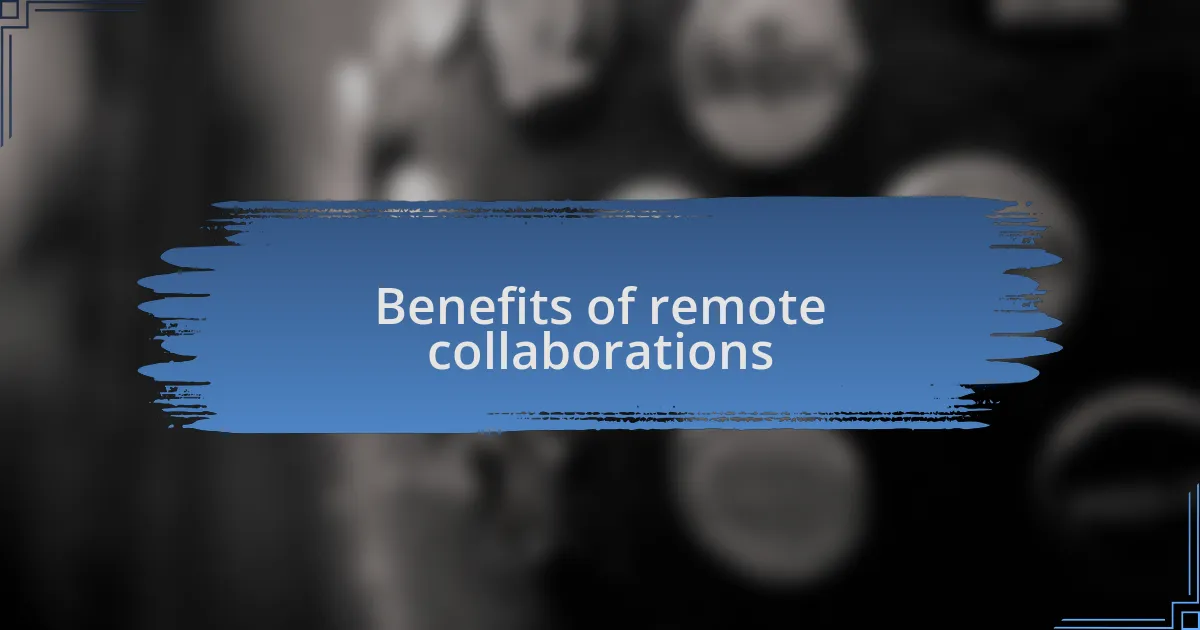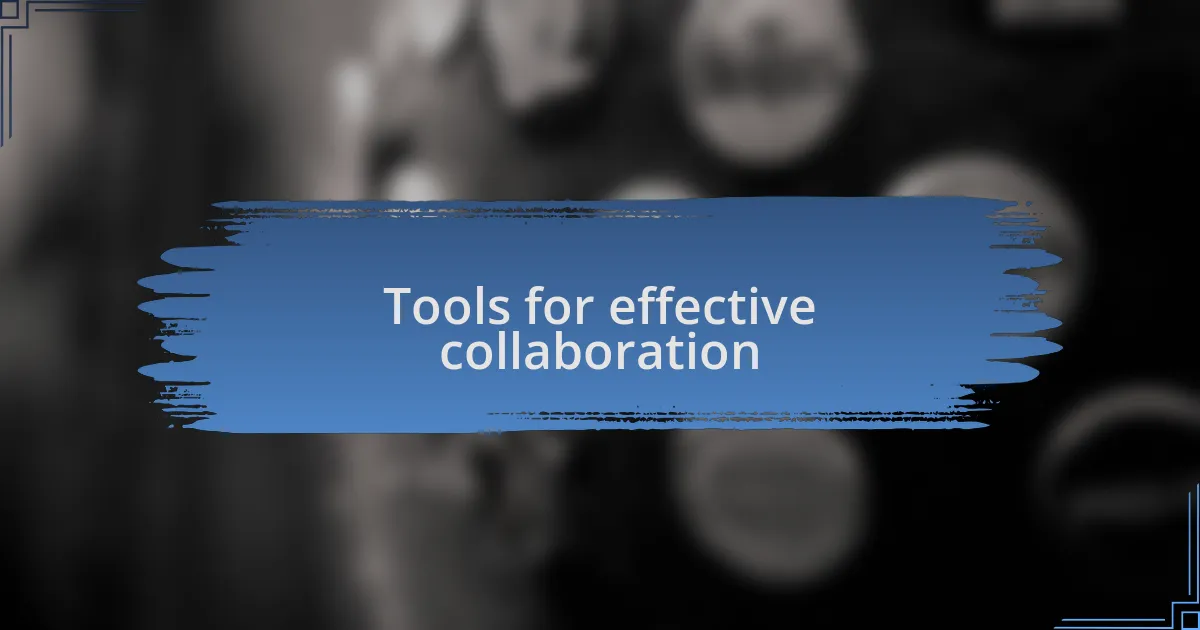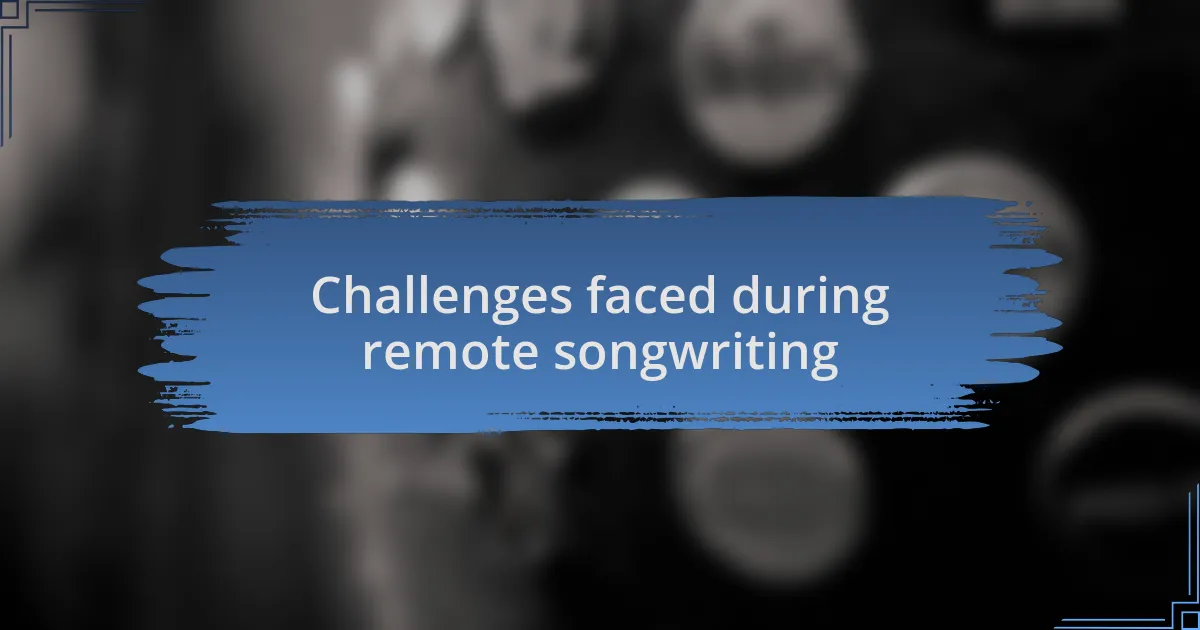Key takeaways:
- Remote collaborations allow for flexibility and asynchronous creativity, fostering unique ideas and reflections.
- Diverse perspectives from global collaborators enhance the creative process and broaden artistic horizons.
- Effective tools like Splice and Google Drive facilitate real-time interaction and feedback, making collaboration feel more organic.
- Challenges include limited body language interpretation and technological hiccups, which can disrupt the flow of creativity.

Understanding remote collaborations
Remote collaborations can feel like navigating uncharted waters, especially in creative fields like songwriting. I remember feeling both exhilarated and nervous during my first virtual songwriting session. It was strange initially, shifting from face-to-face interactions to relying solely on video calls and shared documents. How could we capture the same energy and spontaneity?
As I got more comfortable, I discovered that remote collaborations offer unique opportunities. For instance, we could work asynchronously, allowing time to reflect and refine ideas before sharing them. I recall a moment when one of my collaborators sent a haunting melody at midnight. I was so inspired that I couldn’t sleep until I had written lyrics that matched its mood. Isn’t it fascinating how distance can actually spark creativity?
The beauty of remote work lies in the diversity it brings. My partners came from different backgrounds, and their unique perspectives opened my eyes to new lyrical themes and styles. I often ponder, how would my work differ if I only collaborated with those in my local area? Embracing this remote landscape has not only broadened my musical horizons but also deepened my appreciation for the artistry that exists beyond my own space.

Benefits of remote collaborations
Collaborating remotely can significantly enhance flexibility in the creative process. I remember a songwriting session that started with a simple voice memo that one collaborator shared in the early morning while I was brewing coffee. This spontaneity allowed us to brainstorm and refine our ideas on our own time, fostering a dynamic that I often struggled to achieve in person. Isn’t it incredible how a simple idea can evolve into a fully-formed song, all thanks to the flexibility that remote work provides?
Another key benefit I found was the ability to bring together talent from around the globe. During one project, I worked with an incredible producer from New York and a lyricist in London. What struck me was how our different time zones created a constant flow of creativity. One would send a draft while another was still waking up. It felt like our own 24-hour creative cycle. How often do we get such diverse energy in a traditional studio setting?
I also noticed that remote collaborations helped build trust and open communication among team members. Without the usual small talk in a studio, our focus shifted to the music itself. I recall a late-night video call where we shared our vulnerabilities about the lyrics, leading to a heartfelt exchange that strengthened our bond. Have you ever experienced how the absence of physical presence can bring out deeper conversations? In my case, it transformed our collaboration into a more honest and authentic partnership.

Tools for effective collaboration
Effective collaboration relies heavily on the right tools. One app that has transformed my own songwriting process is Splice. I remember tracking a song with a co-writer when we discovered a unique loop I stumbled upon. By sharing clips in real-time, we could shape the track together, as if we were sitting side by side in a studio. It’s fascinating how technology can bridge distances, don’t you think?
Another essential tool I’ve come to rely on is Google Drive for sharing lyrics and drafts. There’s something rewarding about seeing real-time feedback on a piece you’re passionate about. I recall a time when I was drafting a song, and my collaborator added notes directly in the document. That interaction felt so immediate and alive, almost like jamming together, despite being miles apart. Doesn’t that spontaneity make collaboration feel more organic?
Lastly, I can’t stress enough the impact of good communication tools like Slack or Zoom. I vividly recall a writing session where we faced a creative block. We quickly jumped on a Zoom call, and suddenly, the shared screen transformed our ideas into visual concepts, reigniting our passion for the project. Isn’t it amazing how a simple video call can turn the tide of creativity? It’s these tools that, in my experience, make remote collaborations not just possible, but genuinely enjoyable.

Challenges faced during remote songwriting
When working remotely, one notable challenge I’ve encountered is the limited ability to read body language. I remember a particular session where my co-writer and I were brainstorming over video chat. It was frustrating trying to interpret nuances in our expressions through a screen. Have you ever felt like you were missing that energy of a live interaction? It’s those subtle cues that often lead to those “aha” moments in songwriting.
Another hurdle that seems to creep up is the mismatch in schedules. I had a time when I was eager to jump into a songwriting session, only to find my collaborator was in a completely different time zone and unavailable. That sense of anticipation turned to disappointment. It makes you wonder how much creativity we’re potentially losing just because we can’t sync our calendars. How do you manage that?
Lastly, technological hiccups can derail progress unexpectedly. I recall a session where my internet connection was spotty, leaving me half-hearing ideas and struggling to communicate my own. It’s a frustrating experience, and I often find myself asking if we lean too much on technology at times. How do we create music when the medium sometimes fails us?

Success stories from remote collaborations
One of my favorite success stories from remote collaborations centers around a project I worked on with a songwriter from across the globe. We exchanged ideas via emails and voice memos, and somehow, we created a track that resonated deeply with both our styles. It was incredible to see how our different backgrounds enriched the song, proving that distance can’t diminish creativity.
In another instance, I teamed up with a producer in a different country, tackling a challenging piece that took weeks to perfect. We relied heavily on shared digital tools, and during our collaboration, I discovered new ways to arrange my melodies. It made me wonder—how often do we limit ourselves by only sticking to familiar methods? This experience opened my eyes to the boundless possibilities that remote tools can provide.
I still remember the buzz of excitement when we finished our first track together. The thrill of sharing those moments, though separated by miles, felt almost as intimate as being in the same room. Have you ever shared a creation and felt that electric connection regardless of the distance? It’s those remote collaborations that remind me creativity knows no borders.